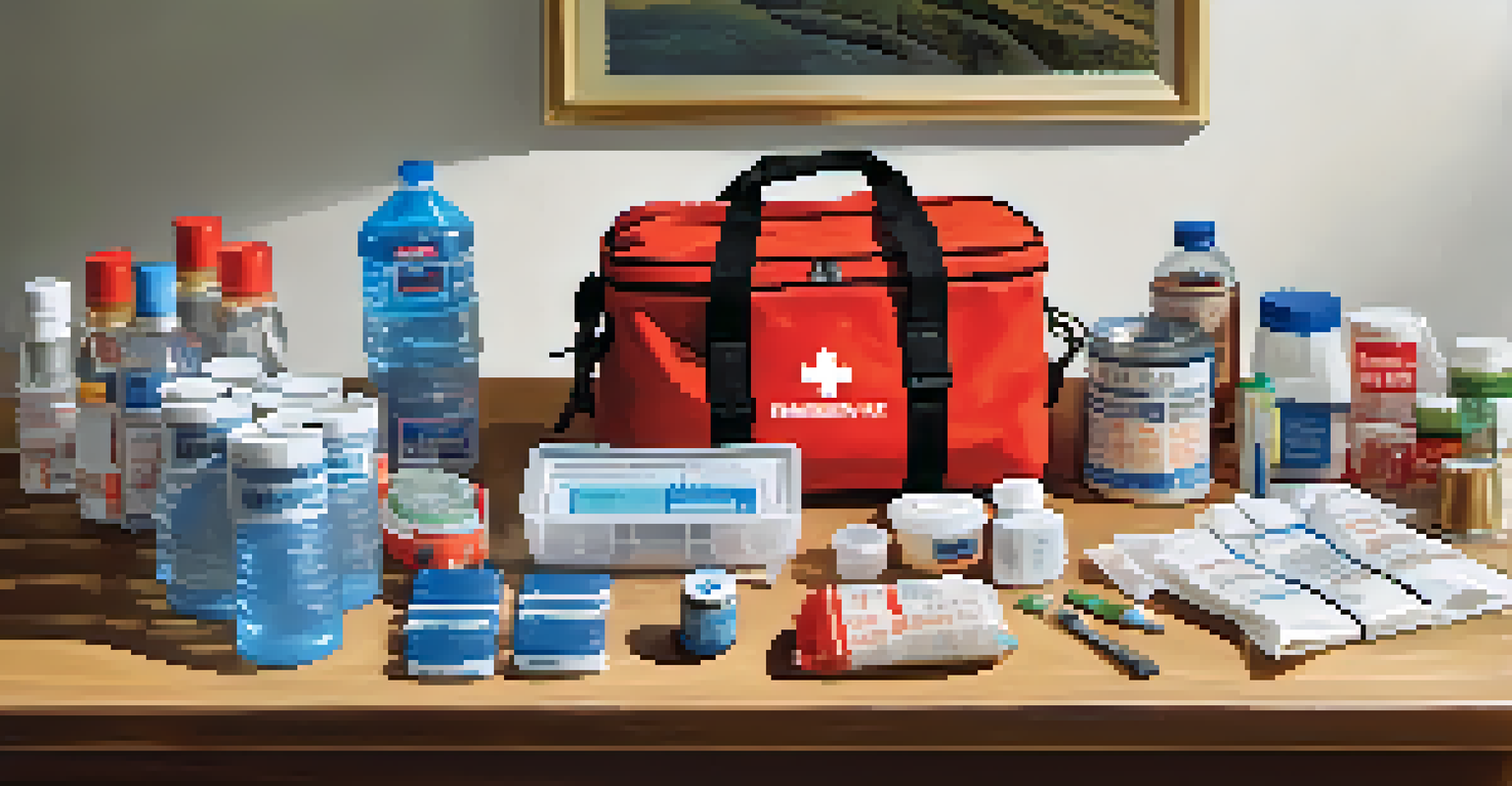Emergency Response Plans for Earthquakes in California

Understanding Earthquake Risks in California
California is prone to seismic activity due to its location along the Pacific Ring of Fire. This means that residents must be aware of the potential risks and prepare accordingly. Earthquakes can strike without warning, making it vital for individuals and families to have a clear understanding of the various types of earthquakes and their potential impacts.
By failing to prepare, you are preparing to fail.
The state has experienced significant earthquakes in the past, such as the Northridge earthquake in 1994, which caused extensive damage and loss of life. Learning from these past events can help communities better prepare for future quakes. Understanding the local geology and its implications can also aid in risk assessment.
By grasping the risks associated with earthquakes, Californians can take actionable steps to protect themselves and their loved ones. This foundational knowledge is essential for developing effective emergency response plans.
Creating a Family Emergency Response Plan
An effective family emergency response plan is crucial for ensuring everyone's safety during an earthquake. Begin by discussing with your family how to respond in various scenarios, such as during the quake itself or in its aftermath. Communication is key, so establish a meeting point and share contact information to stay connected.

Consider each family member's needs, including pets, elderly relatives, or children, when crafting your plan. Having a comprehensive kit with food, water, and medical supplies can make all the difference in the event of an emergency. Regularly review and update your plan to adapt to any changes in your family's situation.
Understand Earthquake Risks
Californians should be aware of seismic risks and prepare for potential earthquakes to protect themselves and their families.
Remember, practice makes perfect. Conducting drills will help everyone feel more prepared and confident when an earthquake occurs. By having a solid family emergency response plan, you can ensure that your loved ones know how to act swiftly and safely.
Developing a Community-Based Earthquake Plan
While personal plans are essential, community-based earthquake response plans play a critical role in overall safety. Communities should come together to identify local resources, emergency services, and leaders who can coordinate responses during a disaster. Forming a neighborhood group can enhance preparedness and strengthen relationships.
In the midst of chaos, there is also opportunity.
Local governments often provide resources and training for community planning. Engaging in workshops or training sessions can equip residents with valuable skills, such as first aid and search and rescue. Collaborating with local emergency services can also help ensure a coordinated response in the event of an earthquake.
By fostering a sense of teamwork and collaboration, communities can create a robust network of support during emergencies. This collective effort can lead to quicker recovery and a more resilient community.
Essential Supplies for Earthquake Preparedness
Having the right supplies on hand is vital for effective earthquake preparedness. A well-stocked emergency kit should include food, water, first aid supplies, flashlights, batteries, and important documents. Consider adding items specific to your family’s needs, such as medications or baby supplies.
It's also wise to prepare for extended disruptions to services. Store enough food and water to last at least three days for each family member. Regularly check your supplies to ensure everything is up to date and functioning, replacing expired items as needed.
Create an Emergency Plan
Having a comprehensive family emergency response plan, including regular drills, is vital for ensuring safety during an earthquake.
Being proactive about your preparedness can help alleviate stress during an emergency. When the ground shakes, knowing you have the necessary supplies can provide peace of mind and help you focus on keeping your family safe.
Staying Informed: Monitoring Earthquake Alerts
In today's digital age, staying informed about seismic activity has never been easier. Utilize smartphone apps and local alert systems to receive real-time updates on earthquakes and safety tips. This information can be invaluable for making quick decisions during a quake.
Many agencies, including the US Geological Survey (USGS), provide timely alerts and educational resources. Familiarizing yourself with these platforms can help you understand when and where earthquakes are likely to occur. Additionally, following local news outlets can keep you updated on emergency responses in your area.
Being informed empowers you to act swiftly and effectively, minimizing risks to you and your family. Knowledge is a powerful tool in emergency preparedness, and staying connected ensures you're never left in the dark.
The Importance of Regular Drills and Training
Regular drills and training are essential components of effective earthquake preparedness. Practicing your emergency response plan allows everyone to understand their roles and responsibilities during a quake. This familiarity can reduce panic and confusion when an actual earthquake occurs.
Consider participating in community drills or workshops to enhance your skills and knowledge. Local organizations often host events to teach residents about earthquake safety and response techniques. Engaging in these activities not only strengthens individual preparedness but also fosters community resilience.
Stay Informed and Prepared
Utilizing alerts and resources while maintaining essential supplies can empower families to respond effectively during and after an earthquake.
By making drills a routine part of your family's emergency preparedness efforts, you can help build confidence and readiness. Remember, the more prepared you are, the better equipped you'll be to handle the unexpected.
Recovering After an Earthquake: Next Steps
Once the shaking stops, the recovery process begins. Assess the safety of your surroundings and check for injuries among family and neighbors. It’s crucial to stay calm and take stock of the situation before making decisions about evacuation or seeking help.
Local authorities will likely provide updates on safety measures and resources available for recovery. Stay tuned to emergency broadcasts or official announcements for guidance. Knowing where to go for assistance, such as shelters or medical facilities, can expedite the recovery process.

Remember that recovery is a gradual process. Be patient and supportive of one another as communities work together to rebuild and recover from the effects of the earthquake. With resilience and cooperation, communities can emerge stronger than before.